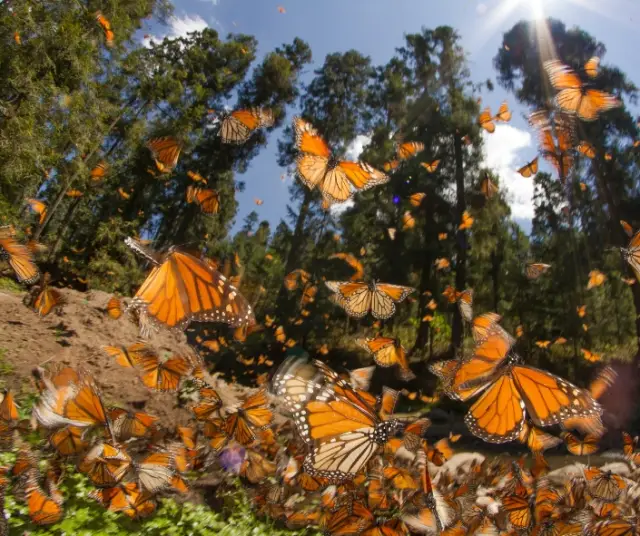Butterflies are one of the most fascinating and beautiful insects in the world. With their bright colors and unique patterns, they are often considered symbols of freedom and transformation.
Butterflies are insects from the order Lepidoptera, which also includes moths. They have two pairs of membranous and scaly wings that allow them to fly. In addition, they have six legs, antennae, and a proboscis, which is a long, thin tube that they use to feed on flower nectar. Butterflies also go through a complete metamorphosis, from eggs to larvae, pupae, and finally adults.
Butterflies can be found on almost every continent in the world, with the exception of Antarctica. There are more than 20,000 known species of butterflies, each with its own unique wing pattern and colouring. Some species are very small, measuring only a few millimeters in length, while others are much larger, with wingspans of more than 30 centimeters.
Where can butterflies be found?
Butterflies can be found in a variety of environments, from grasslands and forests to swamps and deserts. Many species migrate great distances in search of food and to reproduce. For example, the monarch butterfly travels from Canada and the United States to Mexico every year. There are also species that live exclusively on islands or in specific geographic regions.
Butterflies play an important role in the ecosystem. As pollinators, they assist in the pollination of many different plants, which aids in food production and plant diversity. Butterflies are also an important food source for many animals, including birds, bats, and other insects.
Why are butterflies important?
In addition to their important role in the ecosystem, butterflies are also important in human culture. They have been used in art and literature for centuries, and are seen in many cultures as symbols of transformation, freedom, and hope. In some religions, butterflies are a symbol of resurrection and rebirth.
Butterflies are also important to scientific research. Scientists study butterflies to learn more about insect biology and evolution, as well as to study migration patterns and geographic distribution.
types of butterflies
As mentioned above, there are more than 20,000 known species of butterflies. Some of the most common include:
- Monarch Butterflies: These butterflies are known for their annual migration from North America to Mexico. They have bright orange wings with black veins and white spots. Monarch butterflies are also poisonous to predators, as they feed on toxic plants.
- Blue Butterflies: Blue butterflies are known for their beautiful bright blue wings. There are over 200 different species of blue butterflies, and each one varies in size and shade of blue. These butterflies are commonly found in North America, Europe, and Asia.
- Admiral Butterflies: These butterflies are known for their orange and black wings with white spots. There are several different species of admiral butterflies, each with unique characteristics. For example, the red admiral butterfly has red spots on its wings instead of white.
- Tiger Butterflies: These butterflies have wings that are brightly striped in shades of orange and black. They are common throughout the world and are known to be strong and resilient.
- Moth Butterflies: Moth butterflies are similar to butterflies, but are larger and generally less colorful. They are common throughout the world and feed on plants such as nettles.
- Moths : Moths are a type of moth butterfly that are generally active at night. They are known for their brown, mottled wings, and some species have camouflage patterns to avoid predators.
- Glasswing Butterflies: These butterflies are known for their transparent wings with black veins. They are common in South and Central America, and feed on flower nectar.
- Swallowtail butterflies: These butterflies have black wings with bright blue spots and a long, thin tail on their hind wings. They are common in North America and feed on flower nectar.
- Owlwing Butterflies: These butterflies have brown wings and large round eyes that resemble the eyes of an owl. They are common throughout the world and feed on flower nectar.
- Fighting Butterflies: These butterflies have wings that are bright in shades of pink, red, and orange. They are common in South and Central America, and are known for their aggressive behavior towards other butterflies and animals.
